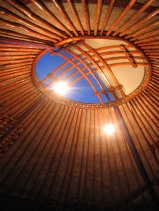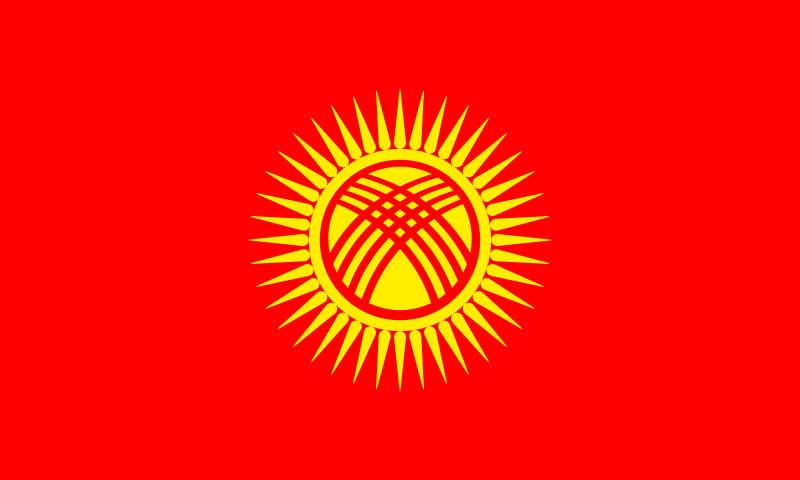Monday, 29 October 2012
Jason Collingwood - Weaver - Talk and show of work
Jason Collingwood is a talented weaver and has been weaving rugs for over 25 years (despite only looking about 25!). He gave a fascinating talk that encompassed his life as the son of world-renowned weaver Peter Collingwood, his path into weaving (largely not as a result of being a weaver's son!) and his own current work.
Entertaining and engaging, Jason's talk was also at times quite challenging. Of particular interest to me as someone who doesn't design in the "accepted" (and seemingly required) way, was the fact that he, too, simply sits with a blank piece of paper and designs from his head. For this reason his designs are simply numbered rather than being given inspiration-based names. Given that it can take me as long to name a new colourway as it can to design the thing I found this most liberating!
Jason described some of the innovations that he and his father had developed to enhance and speed up the weaving process. I am not a weaver - nonetheless, looking at Jason's stunning designs I can appreciate the benefits of the shaft-switching technique, even if I don't understand how to do it! Jason also explained loom adaptations to enable very long warps to be used without disrupting the tension of the weaving (a bit easier to grasp this one!).
In addition to an inspirational slideshow Jason was very generous in bringing samples and allowing them to be photographed. Here are some photos I took - they don't do the rugs justice in any way and I would heartily recommend a look at his gallery on the website.
What I like about his work is the limited use of colour (usually two colours per design) and how he exploits the geometry of the woven structure to create an almost Escher-like interplay of lines and shapes. It was interesting to see how he combines a basic series of geometric shapes to create larger rugs and new designs. All Jason's rugs are woven on a standard width warp. Smaller rugs use fewer warps, leaving the excess unused alongside the main weaving. Large rugs are woven in pieces and painstakingly hand-stitched together.
Choice of colour, too, is interesting as it can really change the design. Take a look at designs #99 and #99A and #88 and #88A to see these two design in alternative colourways - they look strikingly different. The geometric shapes create an illusion of movement and 3-dimensionality (I think I made that up but you know what I mean). Check out the rug on the home page and designs #4 to #9.
I hope that some time I shall be able to take a class with Jason as I gather from my fellow guild members that he is as talented a teacher as he is a speaker.
Sunday, 28 October 2012
Assignment One - Action points and thoughts on tutor feedback
Thanks to Pat for her feedback on Assignment One. Really useful pointers, suggestions and recommendations. All positive, the overriding messages being what you've done is ok but you need to do more of it! More sketching, more sampling and more observing the world.
I'm already working on Assignment Two and plan to take all Pat's suggestions on board, starting with more extensive sampling and setting myself a challenge of doing some sketching every day, even if it's just a little bit.
Onwards and upwards!
I'm already working on Assignment Two and plan to take all Pat's suggestions on board, starting with more extensive sampling and setting myself a challenge of doing some sketching every day, even if it's just a little bit.
Onwards and upwards!
Thursday, 11 October 2012
From Khiva to Kashgar - Talk by Jim Gaffney
At our last Guild meeting I had the pleasure of hearing a talk by Jim Gaffney of Textile Techniques about he and his wife, Diane's, recent trip along part of the Silk Route. It was a fascinating talk, liberally illustrated with fabulous photographs, lots of gorgeous textiles (um, and some very nice items for sale).
Particular highlights for me given my current interest in feltmaking were the beautiful cut-felt rugs, garments and of course the yurts. I also loved the amazing embroideries and hand-stitching, natural dyeing - well, all of it really!
Very briefly....
Khiva in Uzbekistan was the start of the journey. Jim mentioned a book by Christopher Aslan Alexander called Carpet Ride to Khiva. Definitely one for my booklist as the author worked with UNESCO to establish a successful natural dyeing, weaving and embroidery workshop there. For a wider read around the issues facing this area and how textiles have been integrated into the UNESCO initiative, this report makes a good read. Also, interestingly, I came across a great article in Turkey Red Journal about the dyers of the Khiva project (made even more interesting by the fact that the workshop was organised by two of my lovely dye suppliers, Kathy Hattori and Michele Wipplinger. Truly it is a small world!). Another great read for more info on the history of the area, local dyestuffs etc. (and Turkey Red Journal is a super free resource for anyone interested in textiles).

Suzanis
Traditional Uzbek embroideries - so detailed and intricate it takes your breath away.
Zarduzi - hand-stitched goldwork from Bukhara
Having done a tiny bit of goldwork and knowing how painstakingly slow it is, this exquisite suit was just so amazing. My photos are pathetically inadequate at capturing the quality of the workmanship and beautiful construction.
Hand-stitched hat - Osh
Kyrgyzstan
Fabulous felt - Amazing yurts!
I love a bit of felt-making but I can only imagine the time and work that goes into making a genuine yurt. When you consider that the starting weight of the fleece needed for a yurt is a staggering 500 kilos that ends up with 250 kilos of finished felt sheets, it makes my little felt bootees look pretty tame! What is particularly special about yurts is that not only is the fabric of the dwelling made of felt but much of the furniture and decoration will be textile-based, too, including screens, beds and bedding, doors, bags and, of course, rugs.
And speaking of rugs, here are some photos of amazing cut-felt rugs called Shyrdaks. Layers of thick felt are cut into traditional patterns. Both the cut-out and the outer fabric is retained so that two rugs can be made from a single design, one a positive image, one negative. The layers are then quilt-stitched (all by hand) to create the spongiest, warmest but sturdiest rugs imaginable. I'm very keen to try this technique (but maybe I'll start on a smaller scale!).
Oh, and before I leave yurts behind it was most interesting to learn that the tunduk or roof dome of the yurt features on the Kyrgyzstan flag.
This is just my quick snapshot. For the real deal, I'd strongly recommend curling up alone with your laptop/ipad and a nice hot cuppa/wine/something stronger and read the full story of this amazing journey - Prepare for a virtual journey that will warm any textile enthusiast's heart! Of course we'd all love to have done the journey ourselves, but if, like me, that's not likely to happen in this lifetime (I'm not ruling out other lifetimes), Jim and Diane's blog is the next best thing. Thanks to Jim for a great talk, for sharing some beautiful textiles and giving us a tantalising glimpse into the lives of the makers and their stories (and for the printing blocks and antique natural dyed fabric that might just have found their way into my essential textile hoard for future use!).
Particular highlights for me given my current interest in feltmaking were the beautiful cut-felt rugs, garments and of course the yurts. I also loved the amazing embroideries and hand-stitching, natural dyeing - well, all of it really!
Very briefly....
Khiva in Uzbekistan was the start of the journey. Jim mentioned a book by Christopher Aslan Alexander called Carpet Ride to Khiva. Definitely one for my booklist as the author worked with UNESCO to establish a successful natural dyeing, weaving and embroidery workshop there. For a wider read around the issues facing this area and how textiles have been integrated into the UNESCO initiative, this report makes a good read. Also, interestingly, I came across a great article in Turkey Red Journal about the dyers of the Khiva project (made even more interesting by the fact that the workshop was organised by two of my lovely dye suppliers, Kathy Hattori and Michele Wipplinger. Truly it is a small world!). Another great read for more info on the history of the area, local dyestuffs etc. (and Turkey Red Journal is a super free resource for anyone interested in textiles).
Suzanis
Traditional Uzbek embroideries - so detailed and intricate it takes your breath away.
Zarduzi - hand-stitched goldwork from Bukhara
Having done a tiny bit of goldwork and knowing how painstakingly slow it is, this exquisite suit was just so amazing. My photos are pathetically inadequate at capturing the quality of the workmanship and beautiful construction.
Hand-stitched hat - Osh
Kyrgyzstan
Fabulous felt - Amazing yurts!
I love a bit of felt-making but I can only imagine the time and work that goes into making a genuine yurt. When you consider that the starting weight of the fleece needed for a yurt is a staggering 500 kilos that ends up with 250 kilos of finished felt sheets, it makes my little felt bootees look pretty tame! What is particularly special about yurts is that not only is the fabric of the dwelling made of felt but much of the furniture and decoration will be textile-based, too, including screens, beds and bedding, doors, bags and, of course, rugs.
And speaking of rugs, here are some photos of amazing cut-felt rugs called Shyrdaks. Layers of thick felt are cut into traditional patterns. Both the cut-out and the outer fabric is retained so that two rugs can be made from a single design, one a positive image, one negative. The layers are then quilt-stitched (all by hand) to create the spongiest, warmest but sturdiest rugs imaginable. I'm very keen to try this technique (but maybe I'll start on a smaller scale!).
Oh, and before I leave yurts behind it was most interesting to learn that the tunduk or roof dome of the yurt features on the Kyrgyzstan flag.
 |
 |
This is just my quick snapshot. For the real deal, I'd strongly recommend curling up alone with your laptop/ipad and a nice hot cuppa/wine/something stronger and read the full story of this amazing journey - Prepare for a virtual journey that will warm any textile enthusiast's heart! Of course we'd all love to have done the journey ourselves, but if, like me, that's not likely to happen in this lifetime (I'm not ruling out other lifetimes), Jim and Diane's blog is the next best thing. Thanks to Jim for a great talk, for sharing some beautiful textiles and giving us a tantalising glimpse into the lives of the makers and their stories (and for the printing blocks and antique natural dyed fabric that might just have found their way into my essential textile hoard for future use!).
Subscribe to:
Posts (Atom)


























